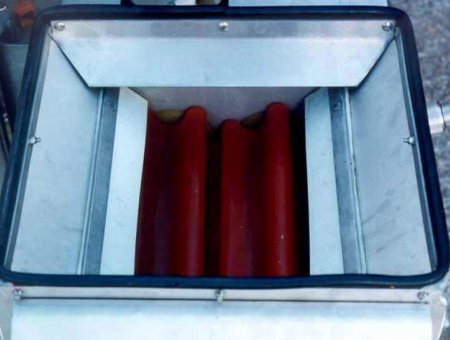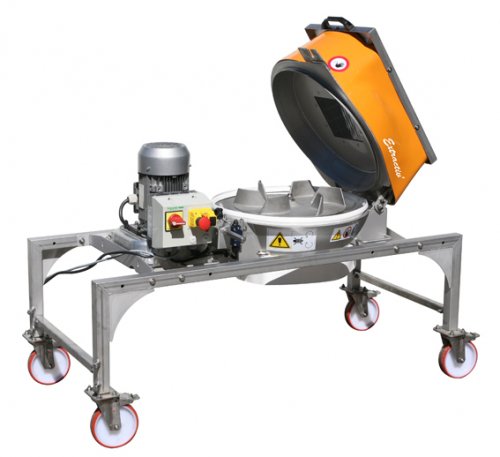Crusher
The crusher is a crucial piece of equipment in winemaking, crushing ripe grapes to extract the juice while preserving the pips and stalks. Modern models, whether electric or hydraulic, use grooved rollers to control the intensity of the crushing. This process extracts the juice, maximises contact with the skins to extract aromas, tannins and colour, and homogenises the maceration process. Advanced versions, such as centrifugal crushers, offer innovative options for grape treatment.

Description and operation
The crusher is an essential piece of equipment that crushes ripe grapes by pressure to extract the juice, leaving the pips and stalks intact. The purpose of the crusher is to release the grape juice and bring the skins into contact with the juice.Traditionally, the harvested grapes were collected in large wooden vats and people crushed them with their feet or tools to break open the grape berries and release the juice.
Modern crushers are generally electric or hydaulic and are made up of fluted rollers that rotate in opposite directions. The intensity of the crushing is chosen according to the extraction objective and the ripeness of the grapes. The intensity of the crushing varies according to the spacing between the rollers.
The crusher can be used on its own at the end of the cone or with a sorting table for mechanically harvested, destemmed grapes. The recommended position for the crusher is after the destemmer.

Centrifugal crusher
 Roller crusher
Roller crusherIn addition to the roller crusher, other equipment has existed for some years now, such as the Extraci'v crusher (see photo 1) proposed by Pellenc, which uses centrifugal force to facilitate berry bursting, or the Oenogrape crusher (see photo 2) from Diemme, which has two cylindrical rollers rotating in opposite directions at a differential speed and spaced at a defined, constant distance apart.
Importance in winemaking
The crusher is a tool for
- Juice extraction: the crucial first stage in starting fermentation
- Contact with the skin: to ensure good extraction of aromas, tannins and colours
- Control: to control andhomogenise the maceration and extraction process












